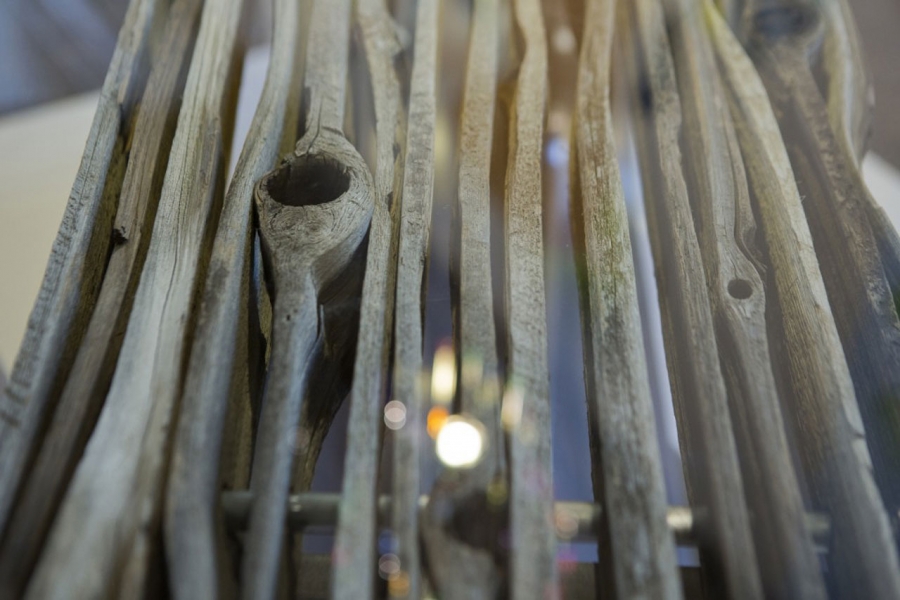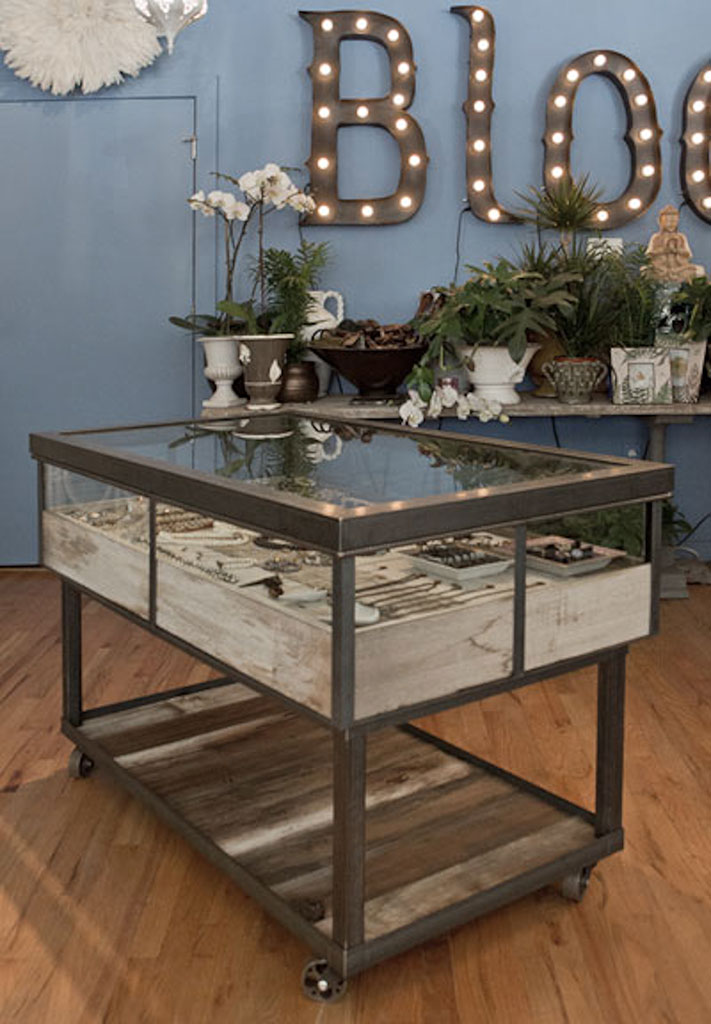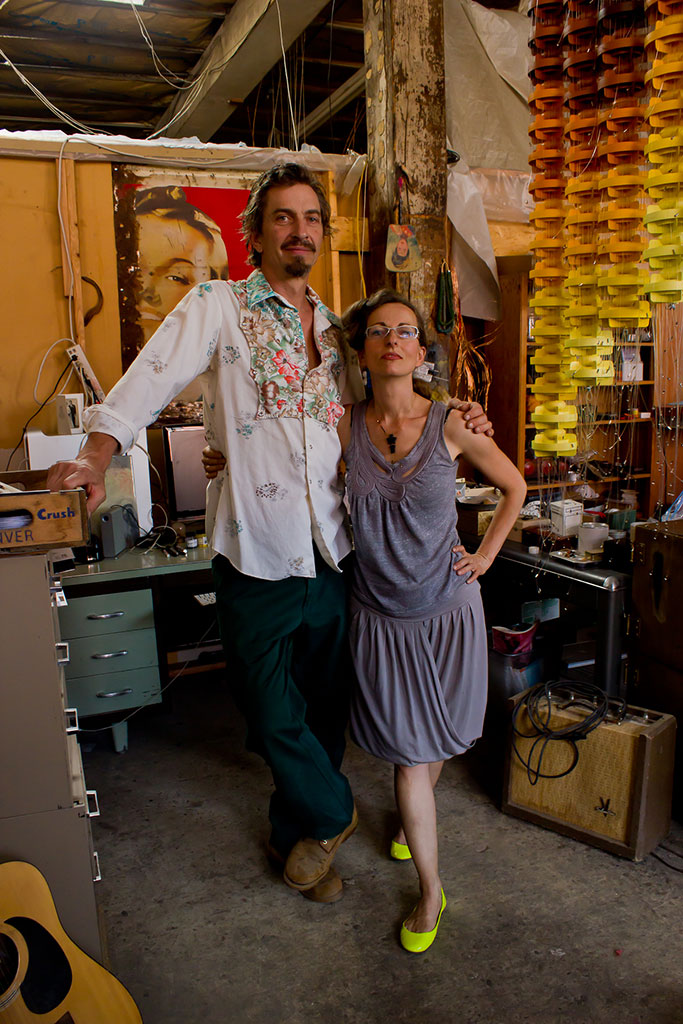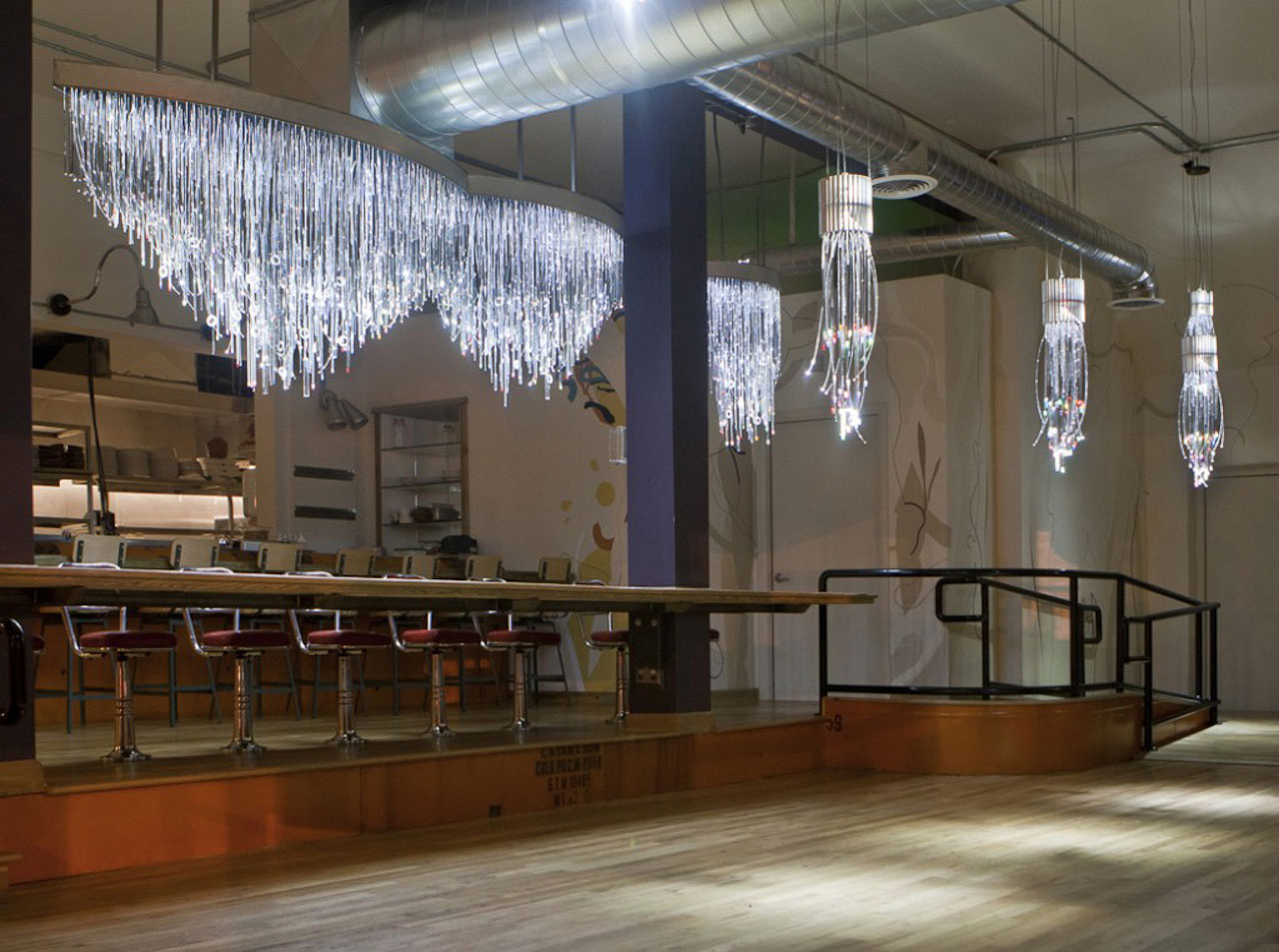Aell and Rushton: High-End Sustainable Design in Denver
A husband-and-wife design team in Denver use salvaged items and found materials to create intricate interiors that belie their humble origins. Randy Rushton and Sabin Aell discuss their craft, their belief in collaboration, and the way they "exploit fun."
 Sabin Aell
Sabin Aell
“Things find you,” explains Randy Rushton, one half of a married design team who work exclusively with found, reclaimed, and recycled materials. Working with things pulled from dumpsters or found at salvage yards, Rushton and artist Sabin Aell craft gorgeous, intricate interiors that belie the humble origins of their materials.

Aell, an artist with a background in art history, graphic design, and photography and an art degree from Vienna, met Rushton, a meticulous craftsman who had bounced through “20–30 trades,” when Aell was invited to show her work in Denver in 2005. Falling in love with both Rushton and Denver, she moved here from her home in Frankfurt in 2007 and formed Subsequently Now Productions, which works collaboratively with Custom by Rushton, the design firm formed by Rushton to focus on high-end design centering on sustainability. That journey through the trades came in handy, leaving Rushton with skills in electrical, auto body, and paint work, and carpentry. The two work collaboratively but separately under their own mastheads, even sending one another invoices on projects. They also collaborate with other designers, for example in their budding partnership with another husband-and-wife artist team, Matthias Leppitsch and Patty Lee Becker, under the name Vogel Vaü. Their design ethos often finds them collaborating with others, and they enjoy the constant influence while being able to teach younger artists their fabrication processes.

The “things” that find the pair are varied and mysterious. A set of brilliant, twinkling lights that adorn the popular Denver restaurant City’O’City were crafted from Lite Brite pegs pulled from a dumpster, squirrel cage fan parts thrown out on a construction site, and long silver tubes used in typesetting, left over from the days before computers. (Each tube held a stack of tiny letters, which Aell revealed are still trapped inside the constructions.) The spare parts act as weights for the fiber optic cable hanging from the lamps like jellyfish tentacles, inspiring the apt title “Aquatic Collection: Sea Cloud.” Their approach is all-inclusive within a space, so Aell also painted graphic, colorful murals on the walls, creating an intimate and inspiring gathering place for Denver’s creative community.
Both designers counsel patience while working with found materials. While they have a vast warehouse filled with interesting finds, as well as a rapidly filling vacant lot behind it, they say that looking for a specific part can prove frustrating. Often, the right thing “appears,” but it is not necessarily what they thought they were looking for – the flexibility in their approach allows them to respond to what is found, because there is “always one thing that is impossible to find.” Sketches are merely suggestions, and the ideas are driven as much by chance encounters with discarded objects as they are by a preconceived notion. For Aell’s newest construction, a year-long collaboration with dance troupe Daughter Cells, the lane dividers from swimming pools appeared, and after being painted in a cascading gradation of yellows, were transformed to a point that the original objects are completely unrecognizable.
In addition to her design work with Subsequently Now, Aell is well known as an artist, and Aell and Rushton also help other artists by providing studio space and a gallery in their rambling industrial home, Hinterland. Opening in 2008, the space has garnered a prestigious MasterMind Award from Denver’s arts and news weekly, Westword and was built by them entirely from reclaimed and recycled materials, from the lighting to the floor. Even Hinterland’s website expresses their scrappy design ethos: “We appreciate artists and guests who are in resonance with our desire to share, exploit fun, and co-create within living as energy-efficient as it gets."
The focus on sustainability extends to what they choose to build. A mainstay of Custom by Rushton are recycled wood planters meant for home gardens, specifically food. Currently, they are working on all the fixtures for a jewelry and clothing store using reclaimed wood and steel, and recently they participated in the design of Ace Eat Serve, a new restaurant in Denver’s Uptown neighborhood.
This way of working is adaptable to any budget, but requires the ability to see possibility in anything. The possibilities that Aell and Rushton see run the gamut from jewelry to interior design to art. The ideas come directly from the materials, and often there will be only one small part of a larger object that is the perfect thing, for example, the vintage typesetting tubes used in the Aquatic Collection.
This is an approach anyone can take, in terms of designing a home. Look around you, pay attention to what is thrown away – seeing an object as mere color or form can help to divorce it from preconceived notions about its usefulness. After all, the cliché “one man’s trash is another’s treasure” is only a cliché because it rings of truth.

See their work on their websites at:

Lauri Lynnxe Murphy
Lauri Lynnxe Murphy is a visual artist living and working in Denver, Colorado. She holds a Masters of Fine Arts in Sculpture from The Ohio State University, and has opened galleries, studio buildings, and community screen printing shops, built exhibitions in the backs of rental trucks, and curated shows, all while maintaining a rigorous studio practice. She is a consummate DIY proponent, and a former art critic for Eye Level and Go-Go Magazine. Currently, her work involves working with living systems such as hives of honeybees and fireflies to create art.












